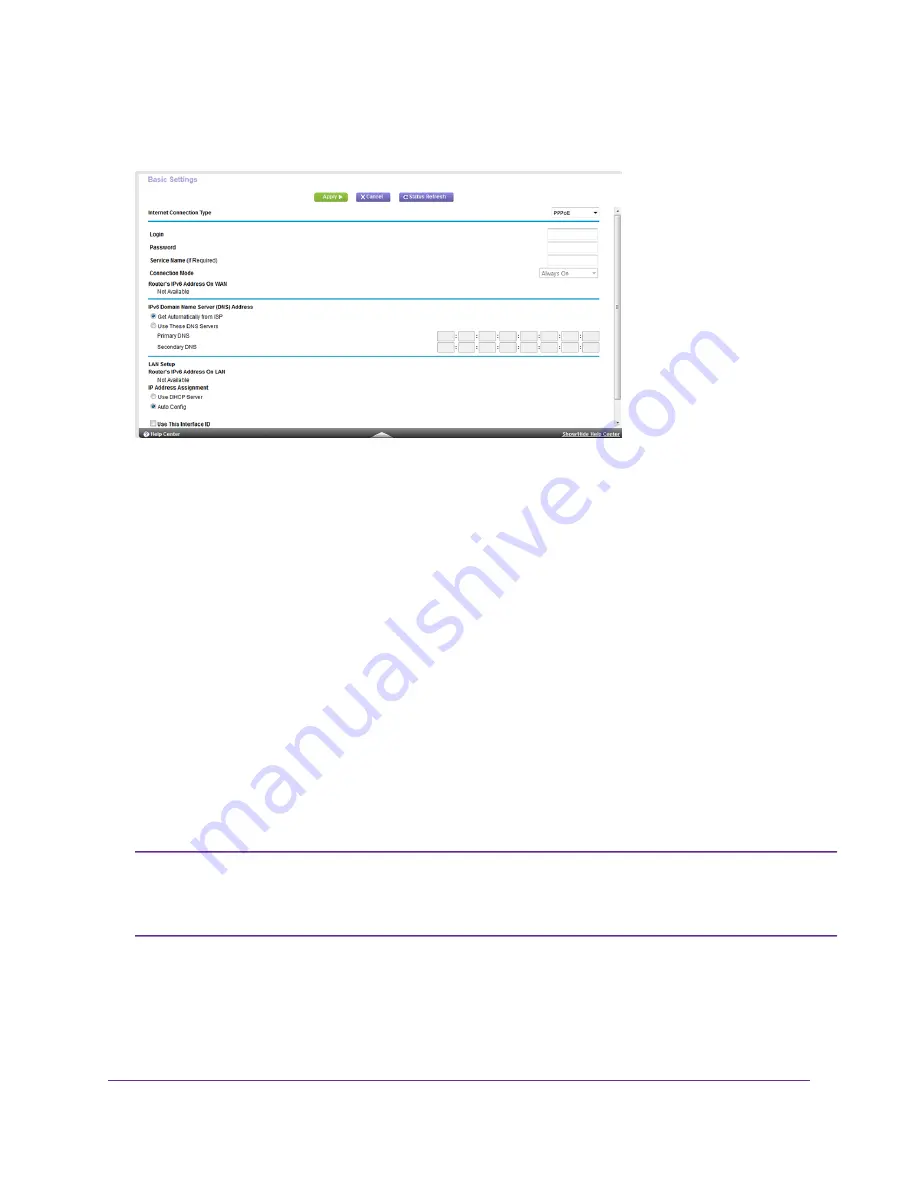
5.
From the Internet Connection Type menu, select PPPoE.
The router automatically detects the information in the following fields:
•
Router’s IPv6 Address on WAN. This field shows the IPv6 address that is acquired for the router’s WAN
(or Internet) interface. The number after the slash (/) is the length of the prefix, which is also indicated by
the underline (_) under the IPv6 address. If no address is acquired, the field displays Not Available.
•
Router’s IPv6 Address on LAN. This field shows the IPv6 address that is acquired for the router’s LAN
interface. The number after the slash (/) is the length of the prefix, which is also indicated by the underline
(_) under the IPv6 address. If no address is acquired, the field displays Not Available.
6.
In the Login field, enter the login information for the ISP connection.
This is usually the name that you use in your email address. For example, if your main mail account is
[email protected], you would type JerAB in this field. Some ISPs (like Mindspring, Earthlink, and T-DSL) require
that you use your full email address when you log in. If your ISP requires your full email address, type it in this
field.
7.
In the Password field, enter the password for the ISP connection.
8.
In the Service Name field, enter a service name.
If your ISP did not provide a service name, leave this field blank.
The default setting of the Connection Mode menu is Always On to provide a steady IPv6
connection. The router never terminates the connection. If the connection is terminated, for
example, when the modem is turned off, the router attempts to reestablish the connection
immediately after the PPPoE connection becomes available again.
Note
9.
Select an IP Address Assignment radio button:
•
Use DHCP Server. This method passes more information to LAN devices but some IPv6 systems might not
support the DHCPv6 client function.
Specify Your Internet Settings
40
Nighthawk X8 AC5000 Tri-Band WiFi Router















































